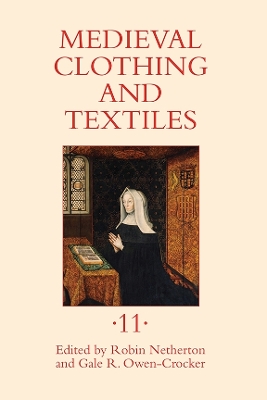The second decade of this acclaimed and popular series begins with a volume that will be essential reading for historians and re-enactors alike. Two papers consider cloth manufacture in the early medieval period: Ingvild Øye examines the graves of prosperous Viking Age women from Western Norway which contained both textile-making tools and the remains of cloth, considering the relationship between the two. Karen Nicholson compliments this with practical experiments in spinning. This is followed by Tina Anderlini's close examination of the details of cut and construction of a thirteenth-century chemise attributed to King Louis IX of France (St Louis), out of its shrine for the firsttime since 1970.
Three papers consider fashionable clothing and morality: Sarah-Grace Heller discusses sumptuary legislation from Angevin Sicily in the 1290s which sought to restrict men's dress at a time when preparation for war was more important than showy clothes; Cordelia Warr examines the dire consequences of a woman dressing extravagantly as portrayed in a fourteenth-century Italian fresco; and Emily Rozier discusses the extremes of dress attributed by moral and satirical writers to the men known as "galaunts". Two textual studies then show the importance of textiles in daily life. Susan Powell reveals the austere but magnificent purchases made on behalf of Lady Margaret Beaufort, mother of King Henry VII, in the last ten years of her life (1498-1509); Anna Riehl Bertolet discusses in detail the passage in Shakespeare's A Midsummer Night's Dream where Helena passionately recalls sewinga sampler with Hermia when they were young and still bosom friends.
- ISBN10 1783270020
- ISBN13 9781783270026
- Publish Date 16 April 2015
- Publish Status Active
- Publish Country GB
- Publisher Boydell & Brewer Ltd
- Imprint The Boydell Press
- Format Hardcover
- Pages 203
- Language English
